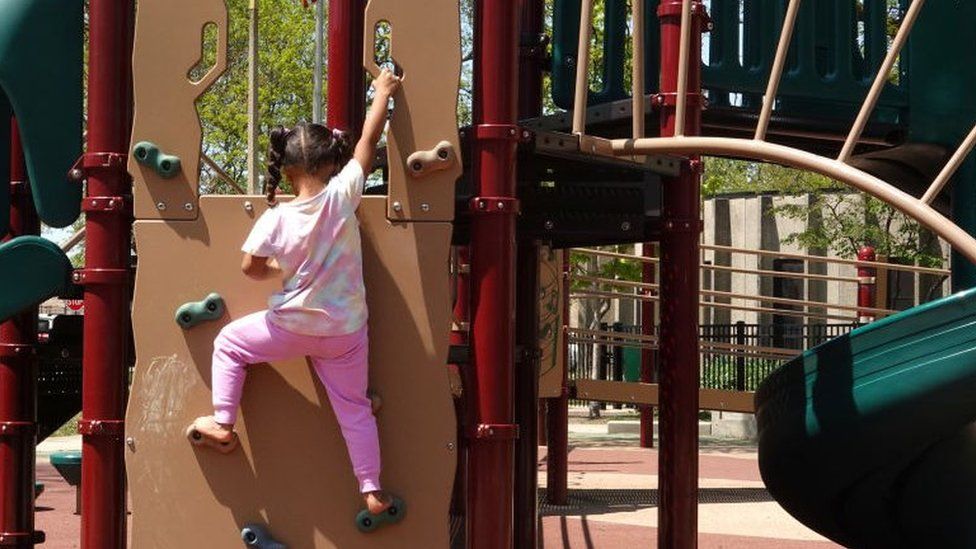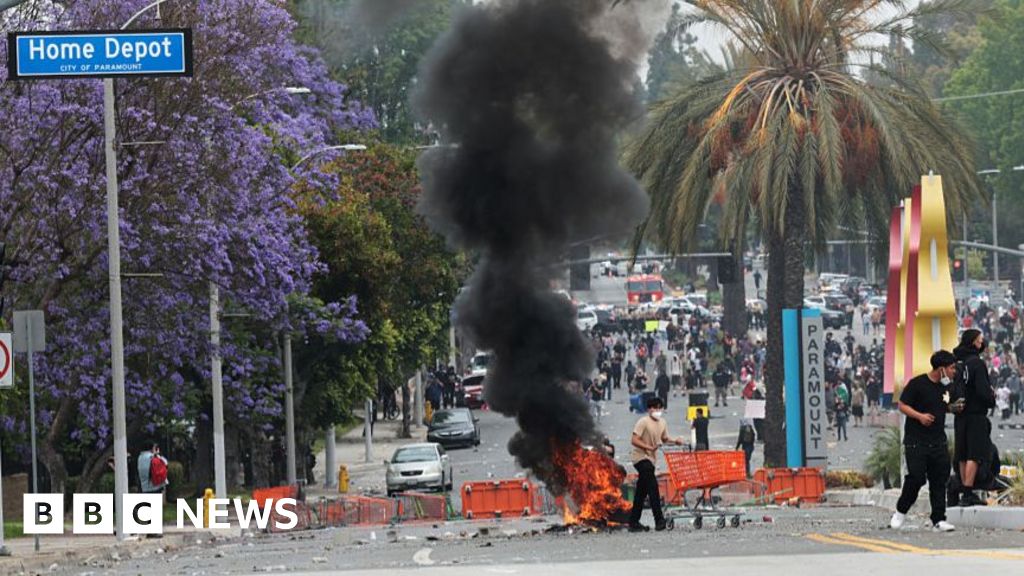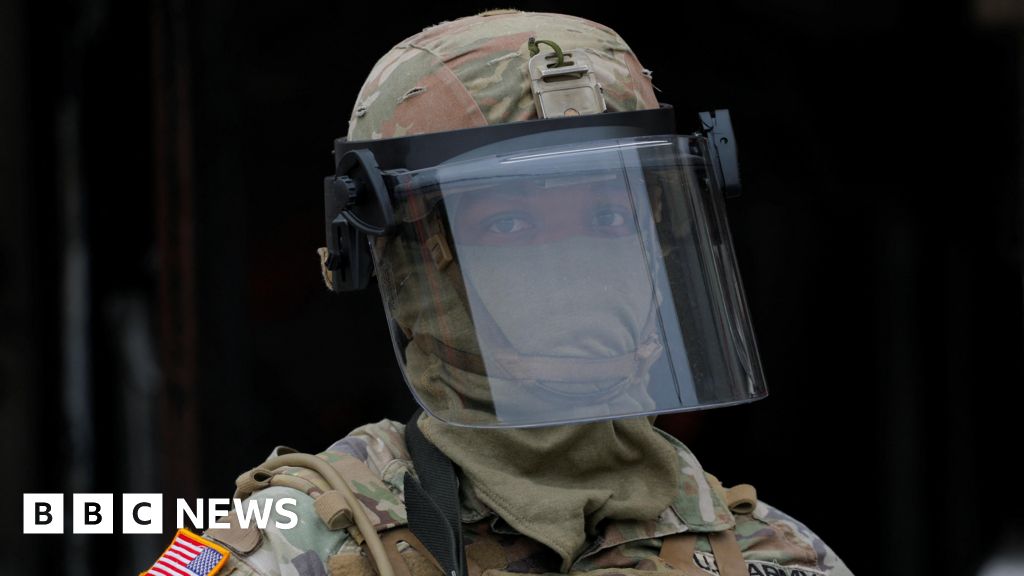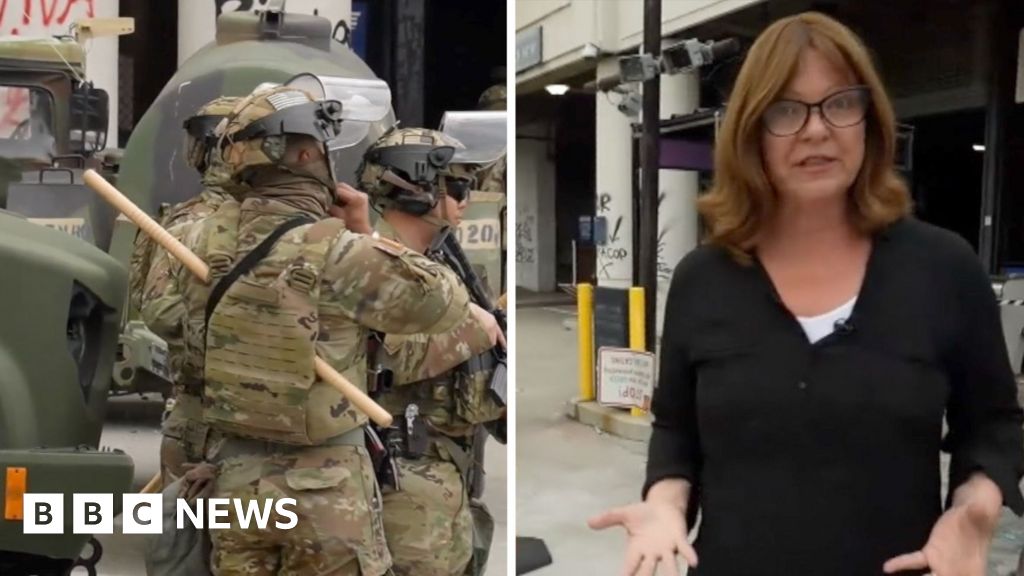ARTICLE AD BOX
 Image source, Getty Images
Image source, Getty Images
A migrant girl who arrived with her family from Venezuela plays in a Chicago playground earlier this week
By Mike Wendling
Reporting from Chicago
Chicago, a city 1,500 miles (2,400 km) from the US-Mexico border, is struggling to provide for thousands of migrants sent from Texas on the orders of Governor Greg Abbott.
Since last summer more than 8,000 migrants have arrived in the city.
They're being housed in police stations and churches, and some existing residents are upset at plans to convert one school into a shelter.
Chicago officials say resources are exhausted.
They estimate the number of new arrivals to be around 100 to 200 per day.
Other northern cities are also struggling.
On Friday, New York Governor Kathy Hochul asked the White House for additional federal funds for asylum seekers who have arrived in New York City.
Chicago declares state of emergency
The number of new arrivals in Chicago is a small fraction of those who've recently entered the country from Central and South America. On the southern border, crossings are currently running at 10,000 per day.
But the influx prompted Mayor Lori Lightfoot to declare a state of emergency earlier this week.
"We should all understand that this crisis will likely deepen before we see it get better," Ms Lightfoot said in a statement.
The declaration allows the city to access emergency funds and could result in the state's national guard being called in to help.
Officials are bracing for more arrivals after Title 42, the pandemic-era border policy that allowed swift deportations, expired on Thursday night.
The migrants began arriving last summer as Gov Abbott, a Republican, attempted to put pressure on the White House to halt border crossings by sending newcomers to Democrat-run cities.
In a letter made public last week, the Texas governor told Ms Lightfoot that she should take the matter up with the president.
"Until Biden secures the border to stop the inflow of mass migration, Texas will continue this necessary program," he wrote.
Other states have done similar.
Last September, Florida Governor Ron DeSantis flew 50 migrants to Martha's Vineyard, a wealthy island in solidly Democratic Massachusetts.
While the political fight continues, Chicago officials are struggling to find housing for migrants and are facing pushback from local residents.
Image source, Getty Images
Image caption,Migrant families from Venezuela watch as their children play in a Chicago park, where a field house has been converted into a migrant shelter
A proposal to convert a school
In South Shore, a mostly African-American neighbourhood on the city's south side, residents have filed a lawsuit aiming to stop a plan to convert an abandoned school into temporary housing for up to 500 migrants.
The neighbourhood, once fairly prosperous, has recently experienced pronounced economic decline.
At a recent public meeting about the school, which many locals hope could be turned into a community centre, some shouted "we don't want them here" and "send them back".
Frank Avila, a lawyer representing the residents, said that, in contrast to the outbursts, most locals - including his clients - are open to immigration and have sympathy for the new arrivals.
However, he said, residents feel the migrants would be better served in wealthier parts of the city and that their voices aren't being heard by officials.
"You need participation and consultation with the people in the communities where immigrants are placed," Mr Avila said.
"Especially African-American people who feel like they're being displaced and don't have services."
A school in another south side neighbourhood was converted to a migrant shelter earlier this year over the objection of some residents.
Migrants are currently being housed throughout the city in police stations, churches, hotels and field houses in parks.
And a debate is brewing over more than 1,000 unused beds, dating from the pandemic, stored by the state's emergency management agency.
Watch: New York struggles to keep up with migrant influx
The city has not requested use of the beds, which has led to criticism from a city council member and others who argue it shows a failure to coordinate a response.
Migrants sleeping outside
"The shelters are full in the city of Chicago," said Antonio Gutierrez, co-founder and strategic co-ordinator of Organized Communities Against Deportation, a non-profit pressure group that is also marshalling support for the new arrivals.
Mr Gutierrez noted that around 400 to 600 people are sleeping in police stations - a number that fluctuates day-by-day.
The lack of space is so acute, Mr Gutierrez said, that when 75 migrants arrived at a police station on Thursday night, half had to sleep outside.
But he also said he understands why the South Shore residents oppose turning the old school into a shelter.
"Solving this issue is going to require much more than just converting a school," he said. "We're eventually going to have to find permanent housing for these individuals."
He predicted the crisis could stretch at least into the summer.
New mayor places blame on Texas
In a few days, the issue will soon no longer be Ms Lightfoot's concern.
Brandon Johnson, a progressive former union organiser who triumphed in the recent Chicago mayoral election, takes over on Monday.
Image source, Getty Images
Image caption,Incoming Chicago mayor Brandon Johnson
Mr Johnson's campaign did not respond to requests for comment on Friday, but the incoming mayor recently put the blame for the situation squarely on Gov Abbott.
"The political decision of governors along the border to try to stick it to us, and use people as political football is unconscionable," Mr Johnson told a public meeting. "I actually find it to be quite wicked and demented."
Mr Johnson has committed to keeping Chicago a "sanctuary city" - one where local laws protect immigrants from deportation - but has called for a comprehensive plan for new arrivals.
His campaign website accused previous city administrations of bulldozing their way through migrant resettlement decisions "without care or forethought".

 2 years ago
48
2 years ago
48








 English (US) ·
English (US) ·